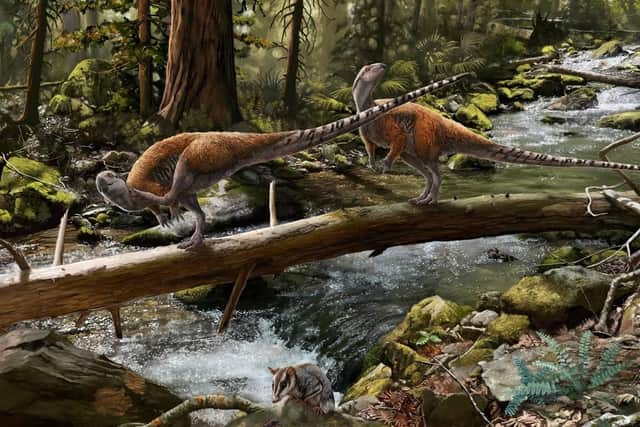'It is utterly bizarre' - another new species of dinosaur discovered on the Isle of Wight
and live on Freeview channel 276
The preserved remains are of a dinosaur called vectidromeus insularis, which was the size of a chicken but juvenile – so might have grown much larger.
It is the second member of the hypsilophodont family to be found on the island.
Advertisement
Hide AdAdvertisement
Hide AdThese noble, bipedal herbivores would have existed about 125 million years ago and lived alongside tyrannosaurs, spinosaurs and iguanodons.


The discovery was made as part of research carried out jointly by the universities of Portsmouth and Bath.
Dr Nicholas Longrich, from the Milner Centre for Evolution at the UoB, said: “Palaeontologists have been working on the Isle of Wight for more than a century, and these fossils have played an important role in the history of vertebrate palaeontology.
"We’re still making new discoveries about the dinosaur fauna as the sea erodes new fossils out of the cliffs.”
Advertisement
Hide AdAdvertisement
Hide AdHe said the vectidromeus is a close relative of the hypsilophodon foxii, a dinosaur originally described in the Victorian era and one of the first dinosaurs to be described from relatively complete remains.
The bird-like remains, which are possibly two to three million years younger than the vectidromeus, were used by famous scientist Thomas Henry Huxley as evidence that birds are related to dinosaurs.
Dr Longrich added: “We had a curious situation where one of the first dinosaur families to be recognised had just one species. And now, we have two.
“What’s intriguing is that they’re not particularly closely related to anything found in North America, Asia or the southern hemisphere.
Advertisement
Hide AdAdvertisement
Hide Ad“We’re still piecing together how all these dinosaurs are related, and how dinosaurs moved between continents.
"After Pangaea broke up, there was a lot of isolation, leading to different kinds of dinosaurs evolving on each continent.”
Co-author on the study, published in Cretaceous Research, Professor Dave Martill (UoP) said: “It is utterly bizarre that so many new dinosaurs are being discovered on the Isle of Wight.
“Vectidromeus is the seventh new species of dinosaur to be discovered in the last four years.
"This is all down to the amateur collectors.”